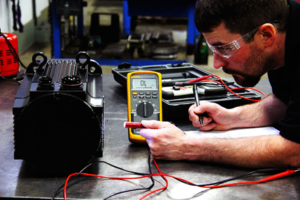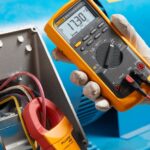One of the most precise motors on the market is a Servo.
1. Servo Electric Motor & Servo motor repair Technician jobs.
A Servo motor repair technician’s job is to work on one of the most precise motors on the market – a servo. Servo motors are able to rotate with extreme precision because of the feedback provided by the control circuit on the present position of the motor shaft. A servo motor is required for anyone who wants to rotate an object at a specified angle or distance. A basic motor and servo mechanism are all that’s required to power it. A DC servo motor is one powered by a DC source, whereas an AC servo motor is one driven by an AC supply. It’s not only about the gear arrangement and operating characteristics; there are many additional varieties of servo motors. There are servo motors that can deliver great torque in tiny and lightweight devices because of their gear arrangement. Toy cars and RC helicopters and aircraft, as well as Robotics and other applications benefit from these qualities [1].

Figure 1 shows the repair of servo motor by Servo motor repair technician.
2. Servo Motor Repair Process:
The feedback repair and readjustment are the difficult stages in fixing servo electric motors. The accuracy of the servo motor repair alignment on this one minor step, and without it, the remainder of the repair is pointless. Many repair shops avoid servo motors because of the high cost of the alignment system and the inability to replace the electronics of the feedback device.
3. Steps:
3.1. Initial Evaluation
The shaft, keyway, end bells, terminals, and connectors are all visually inspected during an evaluation. Stator rewinding may be necessary once the inspection has been completed. A surge comparison test or brief test is carried out. Afterward, a megger test is carried out in each phase to ensure that the insulation has not been damaged.
3.2. Disassembly
After gently removing the backplate, the encoder and encoder housing can be removed. End bells are then removed, the rotor is removed from the stator, and both the rotor and shaft are visually inspected. After that, the brake and the bearings and housing for the bearings are removed.
3.3. Cleaning
In substitute of hand or pressure washing, an alkaline washer is employed since it is better for the motor. This method is used to clean all of the motor components.
3.4. Bearing Change
A motor’s bearings are a common source of failure, so they should be replaced on a regular basis. The bearings that meet or surpass the specifications of all the manufacturers must be utilized. Reassembling the motor after bearing replacement is the final step.
3.5. Final Testing
A count test and a retest are carried out to check that the motor is entirely restored. After that, a memory test is run to verify that the feedback device has been properly realigned. The motor is ready to be sent back to operation once the repair has been thoroughly checked and certified [2].
4. References:
[1] S. N. Ali, A. Hanif, and Q. Ahmed, “Review in thermal effects on the performance of electric motors,” in 2016 International Conference on Intelligent Systems Engineering (ICISE), 2016, pp. 83-88: IEEE.
[2] W. Voss, A Comprehensible Guide to Servo Motor Sizing. Copperhill Media Corporation, 2007.
ElectricmotorShopJobs.com keywords: servo technician jobs, electric motor jobs, electric motor shop jobs, servo motor technician jobs, servo motor repair basics, servo motor repair technician jobs, servo motor repair technician


